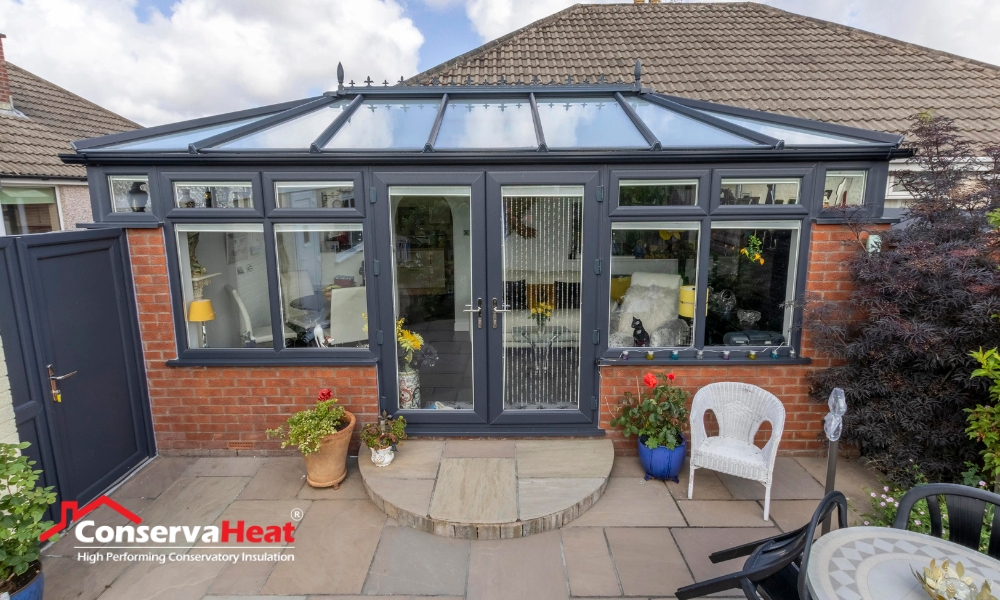Conservatories are a wonderful addition to any home, providing a space to enjoy the outdoors while being protected from the elements. However, the poor thermal efficiency of conservatories often makes them too cold in winter and too hot in summer, rendering them unusable for extended periods of time. Fortunately, insulating your conservatory roof can solve this problem and create a comfortable year-round space. In this comprehensive guide, we will explore the different types of conservatory roof insulation available and help you choose the best option for your needs.
Why Do Conservatories Need Insulation?
Conservatories are primarily constructed using glass and polycarbonate materials, which are poor insulators. As a result, heat escapes quickly during winter, making the space cold and unwelcoming. In summer, the lack of insulation allows heat to enter, leading to uncomfortably high temperatures. Insulating your conservatory roof is crucial to address these issues and maintain a comfortable temperature throughout the year.
Types of Conservatory Roof Insulation
There are several options available when it comes to insulating your conservatory roof. Each option has its own pros and cons, so let's explore them in detail.
1. Aluminium Foil and Thermal Wadding
The most cost-effective option for conservatory roof insulations is using aluminium foil and thermal wadding. With this approach, insulation is added underneath the existing roof. Aluminium foil and thermal wadding work by reflecting heat and preventing its transfer into the conservatory. This method can be effective in reducing heat gain during summer months.
However, it is important to note that aluminium foil and thermal wadding will also provide sufficient insulation during winter. This approach requires careful installation to ensure proper coverage and effectiveness.
2. Thermal Blinds or Roof Drapes
If you are looking for a budget-friendly solution to conservatory roof insulation, thermal blinds or roof drapes can be a viable option. These accessories can be easily installed and offer some level of insulation by creating a thermal barrier between the conservatory and the outside environment. Thermal blinds are typically aluminium-lined, while roof drapes offer a less obstructive option.
While thermal blinds and roof drapes are effective in reducing heat gain during summer, they may not provide significant insulation during winter. It is important to consider whether the level of insulation they offer is sufficient for your needs and climate.
In our opinion this is one of the least cost effective ways of improving your conservatory’s thermal performance and most people do not feel the benefit that they had hoped for.
3. Solar Control Film
A cost-effective option for conservatory roof insulation is the use of solar control film. This thin film is applied to the windows of the conservatory and helps limit the amount of sunlight entering the space. Solar control film absorbs and reradiates sunlight, keeping the conservatory cooler during summer months.
However, it is important to note that solar control film does not provide insulation during winter. Additionally, the quality of the film can vary, and low-quality options may peel off or scratch over time. Consider the climate in your area and the level of insulation required before opting for this solution.
This is the least effective solution on its own.
4. Upgrading the Polycarbonate Roof
Upgrading the polycarbonate roof of your conservatory is another option to improve insulation. This involves replacing the existing polycarbonate roof with a thicker version or adding an additional layer of polycarbonate underneath the existing roof. While this approach can provide some level of insulation improvement, it is important to note that polycarbonate is still a poor insulator compared to other options.
5. Upgrading to a Tiled Conservatory Roof
Opting to completely change the build up of your conservatory roof can be the most impactful method for substantially enhancing the thermal efficiency of your conservatory's ceiling. This process involves removing the existing polycarbonate or glass panels and replacing them with a solid sheet and then tiles are installed to these.
Whilst this is an effective way the only real benefit of this over the aluminium foil internally is the appearance from the outside.
The Tiled Roof Conservatory costs around 4x the amount to insulate the internal conservatory ceiling alone and will not provide a noticeably better insulated roof in comparison.
How to Pick the Best Conservatory Roof Insulation for Your Needs
When deciding on the best conservatory roof insulation for your needs, several factors should be taken into consideration. These include the climate in your area, your budget, and your desired level of insulation. It is also important to consider the aesthetic impact of the chosen insulation method, as some options may affect the appearance of your conservatory.
If you are looking for the highest level of insulation and a seamless integration with your existing conservatory, having your Conservatory roof insulated by experts such as ConservaHeat is recommended. This option provides excellent thermal efficiency and the opportunity to customize the exterior finish to match your home. It really will make your Conservatory feel like part of the home.
For those on a budget or seeking a temporary solution, thermal blinds or roof drapes can offer some insulation benefits. However, it is important to assess whether the level of insulation provided is sufficient for your needs.
Solar control film and upgrading the polycarbonate roof offer more affordable options but may not provide the same level of insulation as other methods. Consider the specific climate in your area and the desired temperature control before deciding on these approaches.
Conclusion
Insulating your conservatory roof is essential to create a comfortable year-round space. Whether you choose to install an insulated conservatory roof, use aluminium foil and thermal wadding, opt for thermal blinds or roof drapes, apply solar control film, or upgrade your polycarbonate roof, it is important to consider your specific needs and budget. Each option has its own advantages and limitations, so choose the best conservatory roof insulation method that suits your requirements and enjoy your conservatory in every season.






Comments